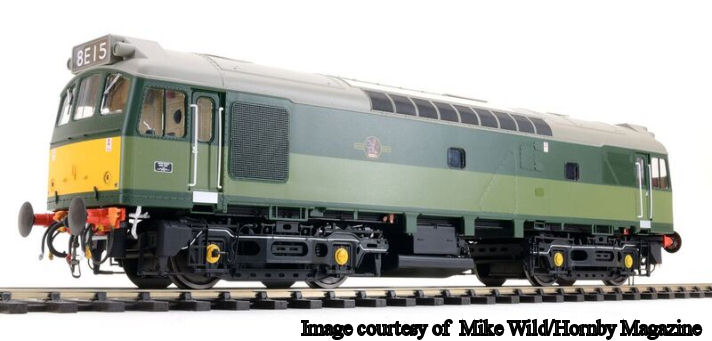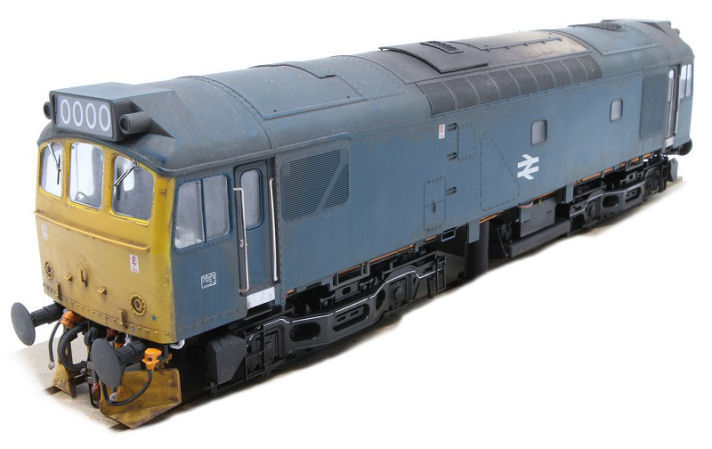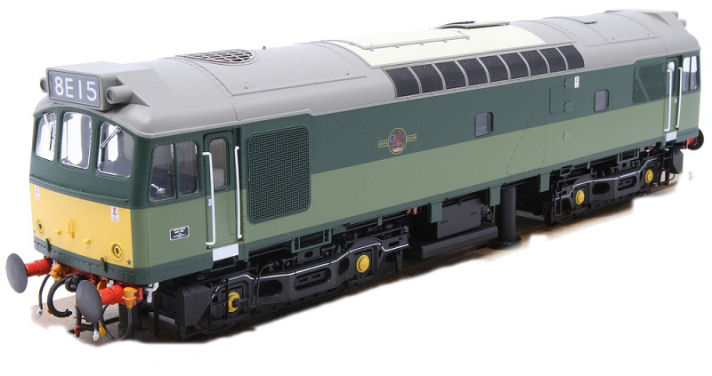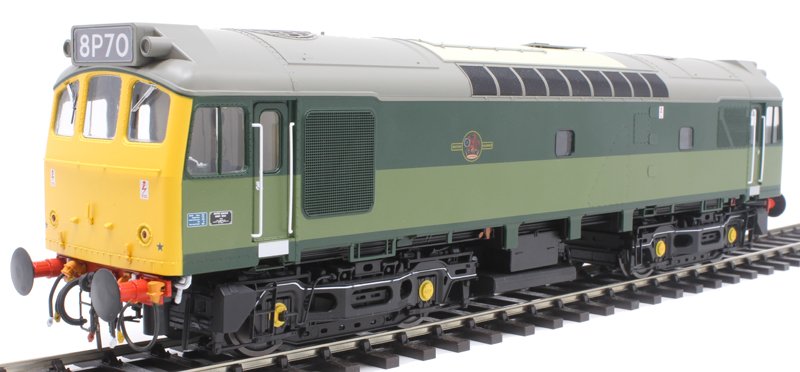
 |
Locomotives |


CLASS 25/3This will be the class 25/3 which will utilise the existing class 25 chassis but with the later style body and missing the underframe water tanks, as these were primarily freight locos with no steam heat boilers fitted. As always we are also offering our numbering service for an additional £25.00 or numbering and weathering for an additional £75.00 There is also the option of sound fitting as well through the workshops at an additional £330.00 using the ESU v5.0 XL chip. These are now completely sold out and Heljan have no plans crurrently to re-run them.. |
| Ref. | Description |
List Price |
Our Price |
| HJ2555 | BR Two Tone Green with yellow warning panels | SOLD OUT |
SOLD OUT |
| HJ2556 | BR Two Tone Green with full yellow ends | SOLD OUT |
SOLD OUT |
| HJ2557 | BR Blue with yellow ends, pre TOPS with double arrows under the cab | SOLD OUT |
SOLD OUT |
| HJ2558 | BR Blue with yellow ends, Post TOPS era with single double arrows centrally on the bodyside | SOLD OUT |
SOLD OUT |
| HJ2559 | BR Blue with yellow ends, Post TOPS era with single double arrows centrally on the bodyside and factory weathered. | SOLD OUT |
SOLD OUT |

LOCOMOTIVE SPECIFICATION. |
| RTR O Gauge locomotives. |
| Heljan BR Class 25/3 |
Ready to run. Features Include |

Number sequence (original) D7598-D7677 (TOPS) 25 248-25 327
The final batch of Class 25 locomotives were designated Class 25/3 and was to be built by BR Derby and Beyer, Peacock and Company of Manchester. However, because of financial problems Beyer, Peacock was unable to complete the final 18 locomotives and these were transferred to BR Derby for construction. Though these locomotives still carried a RTB 15656 generator, this variant was a ten pole machine with a modified assembly incompatible with earlier equipment. The regulated (full hp) part of its characteristic was substantially the same as before but the unloading point, that is the point at which full power could no longer be utilised, was altered to 900 A, 910 V (819kW) from 1,050 A, 780 V (819kW). Only two stages of field weakening were employed, previous machines had six, and this provided ‘full power’ at speeds between 7 and 80mph (130 km/h), and maximum tractive effort was reduced to 41,500 lbf (185,000N). The latter half of the 1960s had seen the widespread introduction of solid state electronics and these locomotives incorporated a control system where speed was detected electronically rather than mechanically. A signal from a tachogenerator was used to close contactors in sequence at given speeds to activate the motor's field weakening process, rather than through contacts and relays as in earlier types. The control system ensured the traction motors and main generator were all operated within the continuous rating of the machines except in full field conditions when the driver was able to judge how long to remain in the short-term rating condition. There were two variants of the Class 25/3 sub-class. Early 25/3 AV locomotives were fitted with vacuum brakes and in due course many of these were dual braked and redesignated 25/3 BX. By the time the last few locomotives were under construction dual braking had become the norm and ten of the last batch from Derby were built new as 25/3 BX locomotives for work out of Willesden on the recently upgraded West Coast Main Line.
|
Click Here to Return to the  index
page index
page |